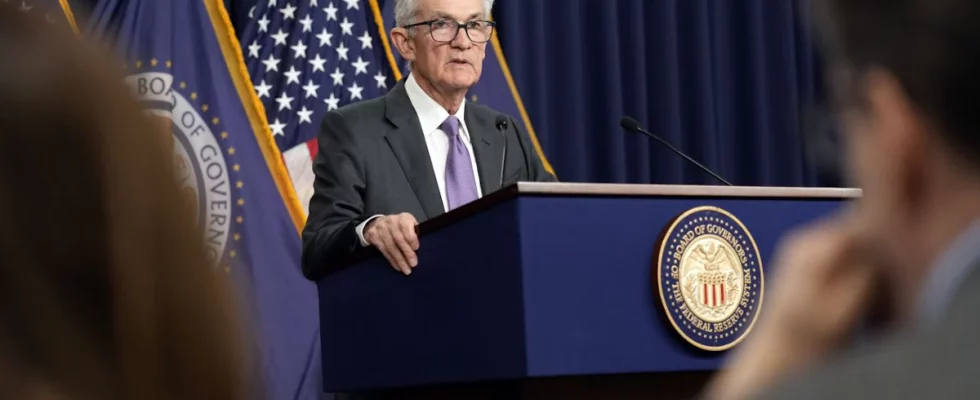The American Federal Reserve has decided to keep the key interest rate constant in the range of 5.25 to 5.5 percent. “In recent months there has been no progress in reducing inflation to the target of two percent,” the central bank said on Wednesday evening. The decision was expected. Federal Reserve Chairman Jerome Powell said after the last interest rate decision in March that inflation had not yet been defeated. Any easing of monetary policy will therefore have to wait.
Some observers are now not expecting a rate cut until November, while others are no longer ruling out a rate hike. The commercial real estate market is in crisis due to high interest rates, with effects extending as far as Europe.
The US monetary authorities want to use a tight monetary policy line to dampen price increases by cooling down the economy and the labor market. This was initially successful; the inflation rate fell from nine percent to less than three percent. But now things are looking up again. Inflation rose to 3.5 percent in March, after 2.8 percent in February. Price increases in one sector of the economy are still passed on to the next, maintaining inflationary pressure.
Plus, consumer demand is strong, rising stock prices are giving people the money they need. The unemployment rate is at a low level of 3.9 percent, and the American economy grew by 1.6 percent in the first quarter of 2024 – despite the highest key interest rates in over 20 years.
Inflation in the euro zone is also above the desired target
The situation in Europe is similar. Although the economy is not growing that much, the inflation rate in the euro zone remains above the desired target of two percent. Consumer prices in the euro zone rose by 2.4 percent year-on-year in April, as in March, the EU statistics office Eurostat announced on Tuesday.
This is the first time since December that inflation has not fallen any further – the central bank’s inflation target is exactly two percent. It is certain that the European Central Bank will lower the key interest rate, which is currently at 4.5 percent, for the first time in June. But it is now very uncertain whether the easing of monetary policy will continue.
Until now, the financial markets had assumed that the monetary authorities in the euro zone and the USA would act at the same time. “It is now almost certain that the ECB will start cutting interest rates in June. If the interest rate difference between the Fed and the ECB increases too much, then a depreciating euro could fuel inflation in Europe again,” says ZEW economist Friedrich Heinemann.

